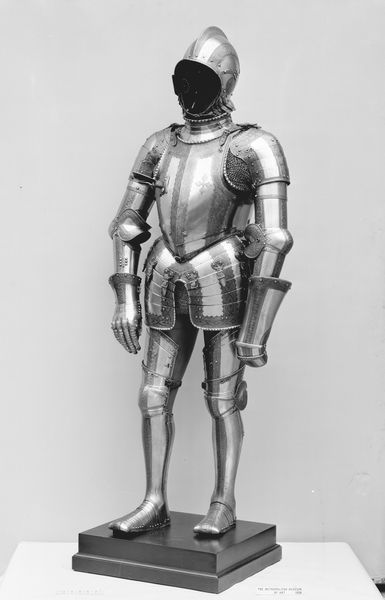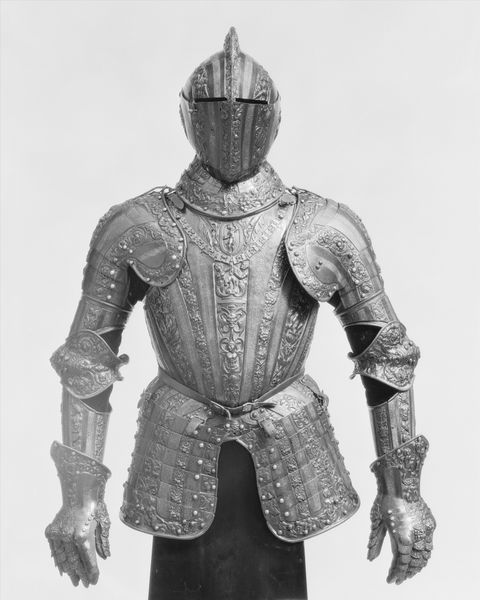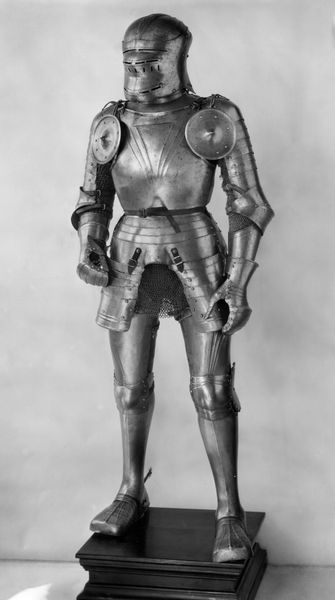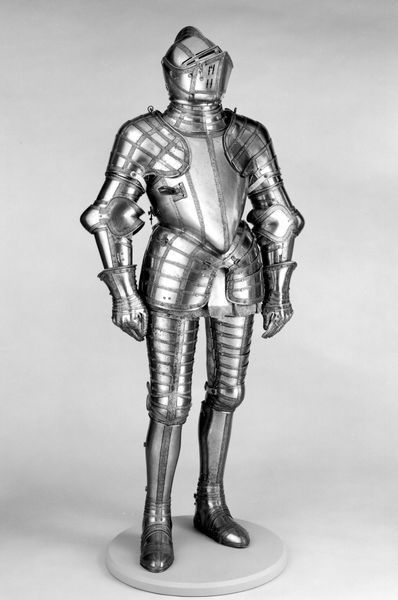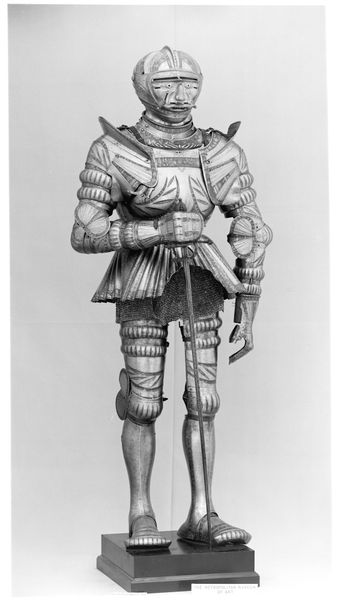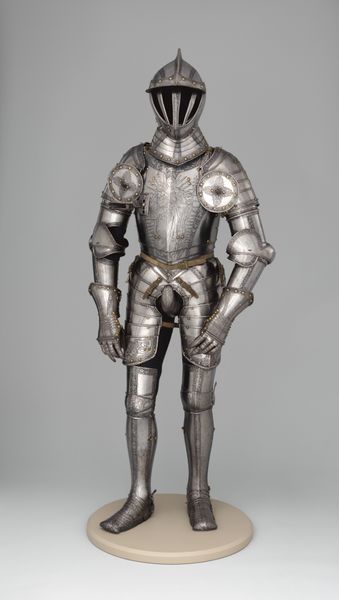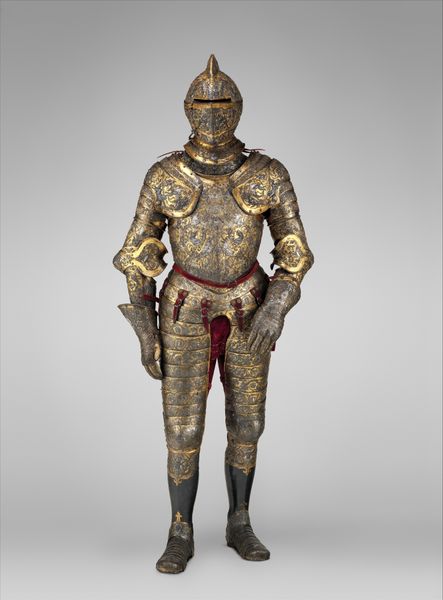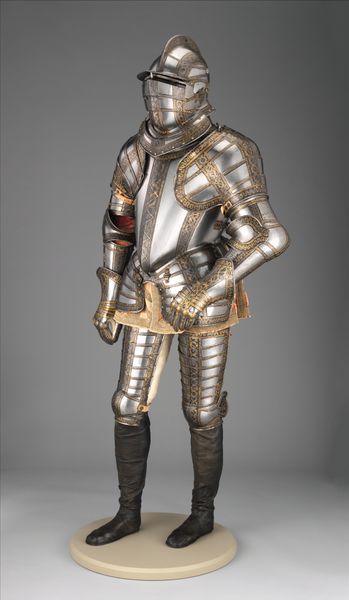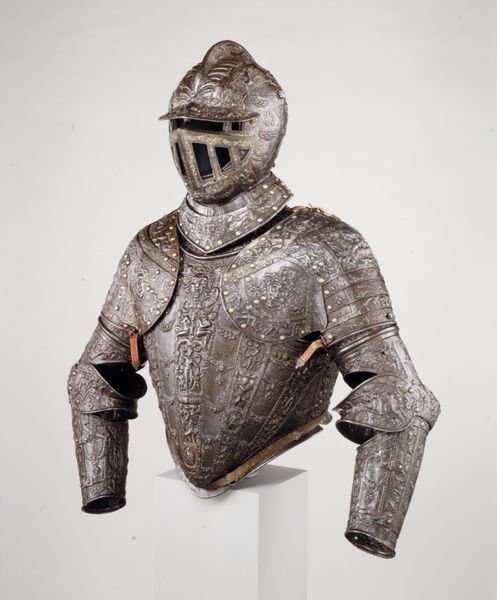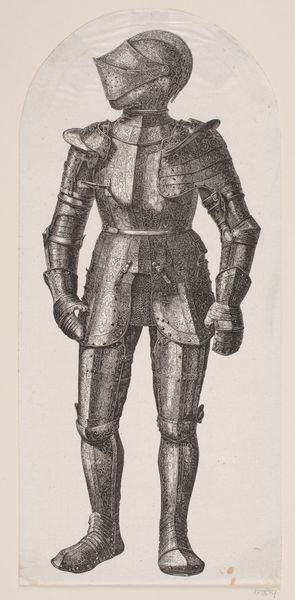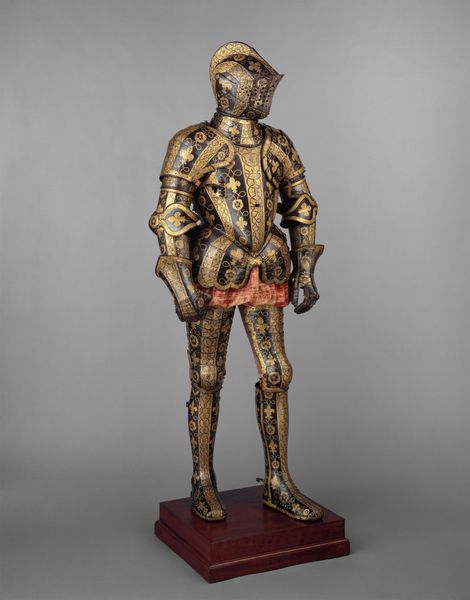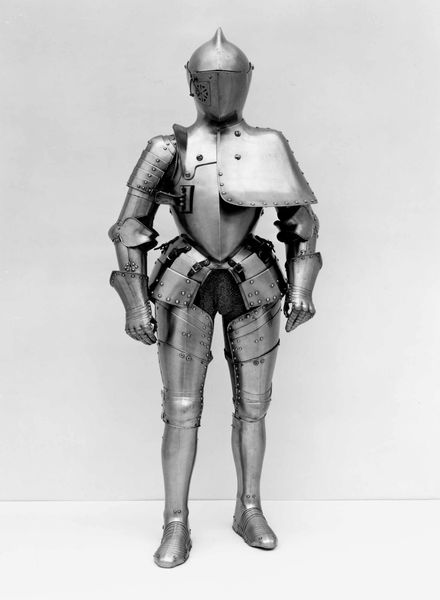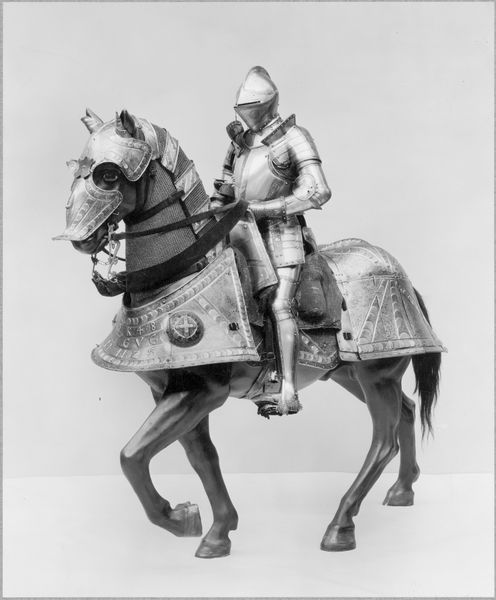
Armor of Henry Herbert (1534–1601), Second Earl of Pembroke 1560 - 1611
0:00
0:00
metal, sculpture
#
portrait
#
medieval
#
metal
#
sculpture
#
form
#
geometric
#
sculpture
#
armor
Dimensions: Wt. 60 lb. 1 oz. (27.24 kg)
Copyright: Public Domain
Editor: So, this impressive suit of armor, made between 1560 and 1611, is identified as the Armor of Henry Herbert, the Second Earl of Pembroke. It's on display here at the Met, made by the Royal Workshops at Greenwich. The detail is amazing. What I find interesting is how functional and decorative it is. As a piece of sculpture, how do we contextualize it? Curator: This armor represents a fascinating intersection of social status, technological advancement, and artistic expression. The Greenwich workshops were established by Henry VIII, signaling a shift in armor production and royal power. Beyond mere protection, this armor projects an image, a political statement of the Earl’s power and standing within the Elizabethan court. It also exemplifies a shift towards a national, rather than exclusively feudal, military power. Think about how portraits functioned: wouldn’t you agree this is essentially a full-body portrait? Editor: Absolutely, a portrait in steel. So it’s less about individual battles and more about conveying status and control? It seems like something more symbolic. Curator: Precisely. Consider the context. The late 16th century was a period of increasing social stratification and courtly display. Armor like this served as a visual marker of nobility and military prowess, even if its use in actual combat was becoming less frequent. The craftsmanship signifies wealth and access to the best artisans. The image created had a distinct political purpose. Editor: It’s interesting how it becomes less a functional object and more an elaborate status symbol tied to the socio-political climate. So the craftsmanship itself is a signifier. Curator: Yes. The highly skilled craftsmanship became almost as important as the protection it offered. That level of artistry declared wealth, power, and refined taste. Armor, especially from Greenwich, was a tool of royal and aristocratic self-fashioning. Editor: That makes so much sense. I had viewed it solely as protective gear, but now I see how intertwined it is with power structures and artistic representation. Curator: Indeed. Viewing art within its historical and social context deepens our appreciation, doesn’t it?
Comments
No comments
Be the first to comment and join the conversation on the ultimate creative platform.
